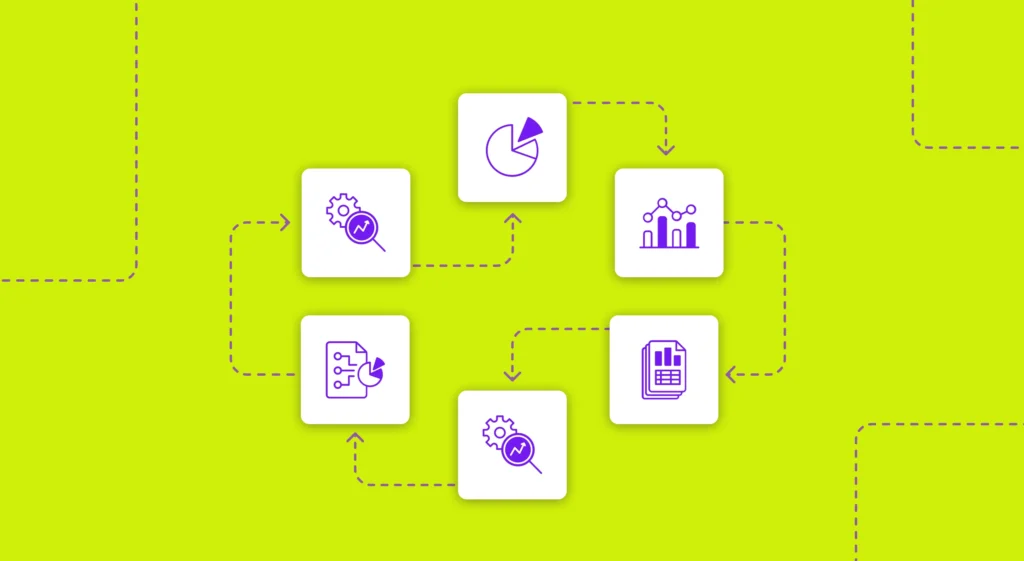Any seasoned engineering manager (EM) knows the secret to producing high-quality products is rooted in a content and motivated team. However, figuring out which levers to pull to build team engagement and satisfaction can be tricky — especially since every person on your team likely has different motivators, likes, and dislikes.
Leading your team to success requires more than technical know-how and hard skills. It requires a delicate dance that balances individual developer wants and business needs.
The most successful and high-performing engineering teams are steered by EMs with a rock-solid sense of what matters. This discernment pivots around three critical leadership skills that every EM must possess: sound decision-making, a coaching mindset, and strong team advocacy.
Skill #1: Focus on Sound Decision Making
As an EM, your decisions impact team health, specific deliverables, and even business goals. It’s safe to say that sound decision-making is one of the most essential leadership skills you can develop.
Consider this: Jellyfish’s 2023 State of Engineering Management report found that the top 25% of software development teams excel in making informed R&D decisions and can appropriately gauge staffing decisions, like who to assign to a project.
As an EM, it’s up to you to determine where to invest engineering resources. When a deliverable goes off-plan, you must think on your feet and pivot at a moment’s notice. However, you must also ensure you’re not sacrificing your team’s health to meet aggressive business timelines.
To make effective decisions, EMs must think independently and take into account a range of inputs, such as tactical factors (e.g., delivery timelines), team health (e.g., employee strengths and weaknesses), business needs (e.g., the team’s strategic priorities), and even company core values (e.g., does our company value someone working late to hit a deadline or would we prefer to move a deadline to keep weekends free?).
5 Tips for Better Decision Making
- Be aware of your own biases. Take a moment to self-reflect or regularly consult with a trusted colleague to ensure your decisions are not unfairly biased by race, gender, ethnicity, personality differences, work experience, or other factors.
- Gather information from multiple sources. Acknowledging multiple perspectives is vital to a well-informed mindset. Consider the quantitative data alongside more qualitative check-ins with your team.
- Align on your company — and personal — values. Your company culture — and the culture you want to foster within your team — should also guide your decision-making process. If your company has a “work hard, play hard” culture, pushing your teams a little more may be okay. If you don’t believe in working weekends, don’t ask your teams to do so.
- Consider the long-term consequences of your decisions. Microdecisions made within a sprint may seem small and insignificant but can lead to serious organizational changes. Think through the big-picture impact of different decisions and ensure you’re comfortable with the consequences of your choice.
- Be willing to change your mind. Great leaders regularly seek out feedback. Be willing to change a decision or shift course based on team or executive feedback. This can also help you build a more collaborative, trusting relationship with your team.
- Conduct a post-mortem on big decisions to identify areas of improvement. At the end of a milestone, gather your team to discuss outcomes and be honest about what went right, what went wrong, and how you can improve next time.
Skill #2: Deploy a Coaching Mindset
“In 2023, manager training and coaching will be paramount, as many organizations will be faced with the challenge of having to simultaneously reduce their workforces while also hiring, retaining, and getting the most from people in crucial roles,” says Jon Greenwalt, SVP, Customer Transformation at 15Five.
Coaching benefits employees at all stages of their careers and leads to more engaged workers with higher productivity levels — even as the economy ebbs and flows. Consider the following:
- In 2022, 15Five found that 53.8% of workers agreed an unsupportive manager would drive their decision to leave their company.
- On the other hand, the International Coaching Federation reports that 86% of organizations with a coaching mindset see positive ROI on their coaching engagements and recoup their investment.
Rather than simply telling teams what to do, a good EM works closely with individual team members to level up their skills and promote strategic thinking. This coaching-first approach not only develops your team but also helps build trust.
5 Ways To Embody a Coaching Mindset
- Remember that your team is human. Everyone makes mistakes, and everyone has different growth areas. Ask yourself how you can support an engineer when they make a mistake so that they can learn and grow in their career. Remind them (and yourself!) that they may need space to figure out and try new things on the path to growth.
- Collaborate with team members on problem-solving. Instead of telling a team member how to solve a problem, ask them questions that will guide their thinking to a solution. This way, you can offer support while helping your team members level up their problem-solving and strategic skills.
- Practice active listening. When meeting with your team members, ask them about their wins and losses, acknowledge their perspectives, and provide supportive feedback. Listen carefully and be ready to ask follow-up questions or dig deeper to ensure you can read between the lines and address root issues (not just symptoms) if needed.
- Empower your team to take calculated risks. Knowing when to take a risk and avoid risk is vital to driving innovation without putting business objectives at risk. Make sure your team feels comfortable taking risks, and be prepared to discuss how to determine a “good” risk with them.
- Provide constructive feedback. Your engineers look to you as a guide, so offer them clear support and direction for seeing a project through. You can make sure feedback is constructive by providing specific examples of things that did or did not go well, plus actionable tips.
- Give kudos and celebrate milestones. Positive feedback is a great motivator. Take time to acknowledge your team’s hard work and dedication — and help them see their work’s impact on your organization.
Skill #3: Practice Team Advocacy
No one wants to feel like they’re being overlooked or ignored, especially after working hard to meet deadlines. An EM with strong leadership skills knows when to advocate for their team and can do so effectively.
When should an EM advocate for their team?
- When there’s a need to secure resources. Advocacy can ensure the team has the necessary resources — such as funding, personnel, and tools — to succeed.
- To protect engineers from external interference. A good EM protects the team from external interference, such as political pressure or micromanagement.
- To build team morale. Advocacy can be positive and motivating for your team. Calling out team wins and success can build morale and create trust within the team.
Speaking up on behalf of your team is important, but it’s critical to discern what does and doesn’t merit advocacy. For example, an EM that advocates for every single team request — big or small, important or not — risks becoming known as the boy who cried wolf.
Leverage your decision-making and coaching skills to identify your team’s wants versus their needs. If something is a want, you should work with that employee to help them understand that distinction.
5 Ways to Build Your Team Advocacy Skills
- Know your team’s needs and goals. Meet one-on-one with team members to understand their goals both personally and professionally. This can help you understand what drives them to do their best work.
- Build relationships with key stakeholders. The products your team builds might be tied to another team’s goals, like sales outcomes or product marketing campaigns. Work cross-functionally to help establish trust between your teams.
- Be assertive when advocating for your team’s needs. Stand up for your team and respectfully push back when their needs are unmet or unheard.
- Always treat your team with respect. Your team will work best when your engineers feel psychologically safe and respected.
- Stay persistent with your advocacy. Advocacy is more than just a one-and-done task. It’s an always-on effort to ensure your team has the resources to succeed.
How Skillsoft Advocates for its Engineering Team
The Skillsoft engineering team wanted to prove that a healthy work culture leads to positive outcomes. The company turned to Jellyfish to better understand its engineers’ needs and identify when to advocate for more resources.
Skillsoft can look at sprint predictability, coding days, and investment category allocations with Jellyfish. The company has even created a template using Jellyfish data to quantify team health and success.
“We love the team metrics within Jellyfish. We use those to celebrate team members,” says Kristen Maguire, Director of Program Management at Skillsoft. “We look at each team individually to assess the overall team dynamic, which has a massive impact on satisfaction, performance, and velocity.”
How Jellyfish Supports Your Growth as a Leader
Our Engineering Management Platform (EMP) is trusted by companies like Mastercard, Priceline, and PagerDuty to keep projects on track and improve delivery processes.
Best of all, it serves as a central source of truth for your team’s data. You gain a holistic picture of how to support your top talent best, whether through decision-making, coaching them through a challenging situation, or advocating for more resources.
To learn more about Jellyfish, take a product tour or request a demo.







